If you’re looking for a plum variety that combines sweetness, juiciness, and easy maintenance, the Satsuma Plum is an excellent choice. Known for its deep red skin, amber flesh, and rich flavor, the Satsuma Plum is a favorite among home gardeners and fruit orchard enthusiasts. Whether you’re planting your first plum tree or adding to your orchard, this guide will walk you through everything you need to know about growing Satsuma Plum trees — from selecting the right spot to harvesting the best fruits.
Understanding the Satsuma Plum Tree
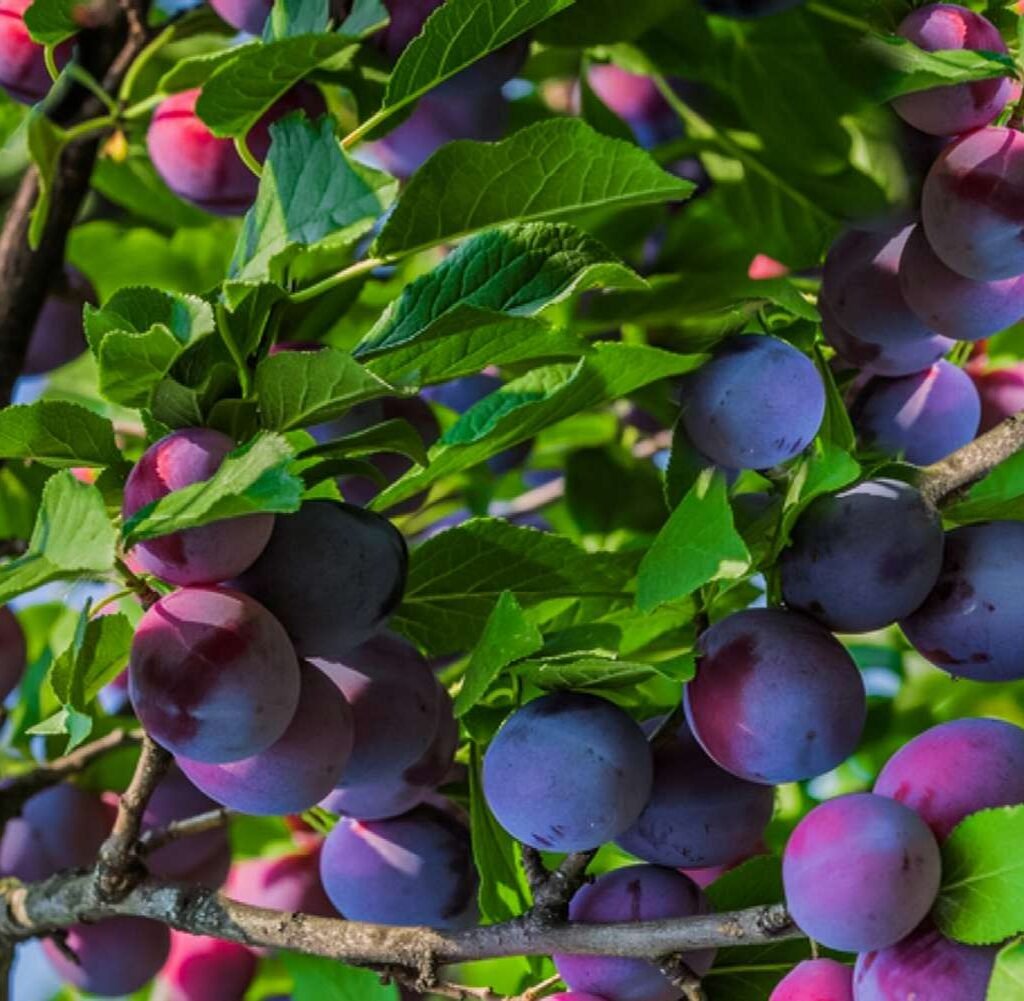
The Satsuma Plum (Prunus salicina ‘Satsuma’) is a Japanese variety known for its adaptability and high productivity. It produces medium to large fruits with dark red skin and golden flesh that’s incredibly sweet when fully ripe. The tree itself is hardy, fast-growing, and well-suited for both backyard gardens and commercial orchards.
Satsuma plums typically ripen in mid to late summer, and they’re best enjoyed fresh off the tree or used in jams, jellies, or desserts. Their flavor improves the longer they stay on the tree, developing a rich sweetness balanced by a slight tartness.
Choosing the Right Planting Location
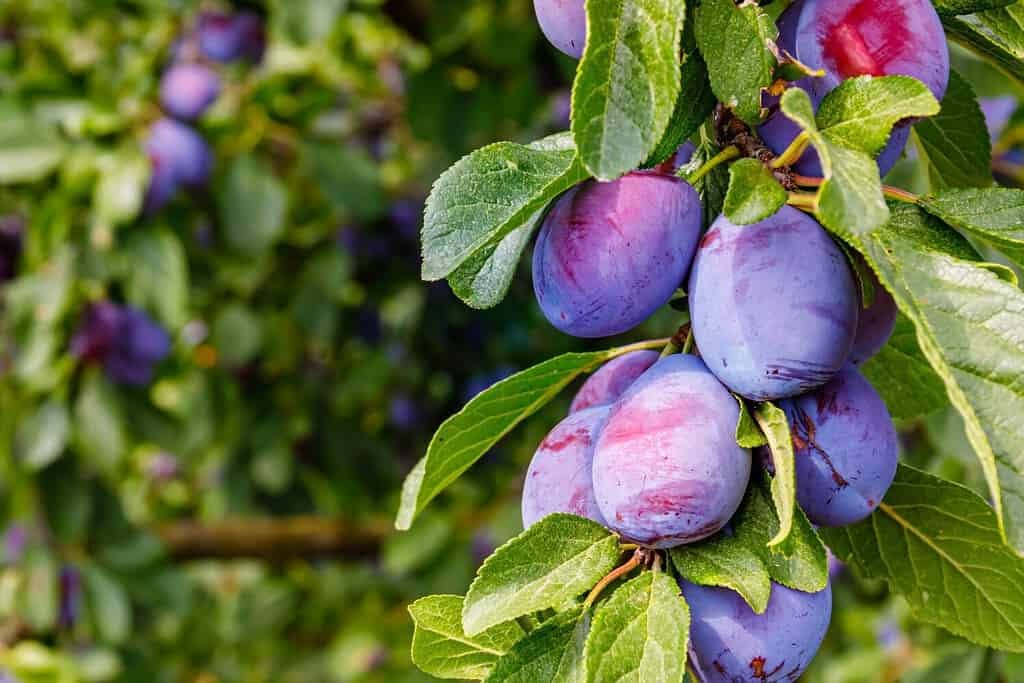
Like most fruit trees, Satsuma plums thrive in full sun — at least 6–8 hours of direct sunlight daily. The more sunlight they receive, the better the fruit quality and yield.
Ideal planting conditions include:
- Soil Type: Well-draining loamy or sandy soil. Avoid heavy clay that retains too much water.
- Soil pH: Slightly acidic to neutral (6.0–7.0).
- Air Circulation: Ensure good airflow around the tree to prevent fungal diseases.
- Protection: Choose a spot sheltered from strong winds or frost pockets.
If your soil tends to stay wet after rain, consider planting your tree on a raised mound or in a slightly elevated area to improve drainage.
How to Plant a Satsuma Plum Tree
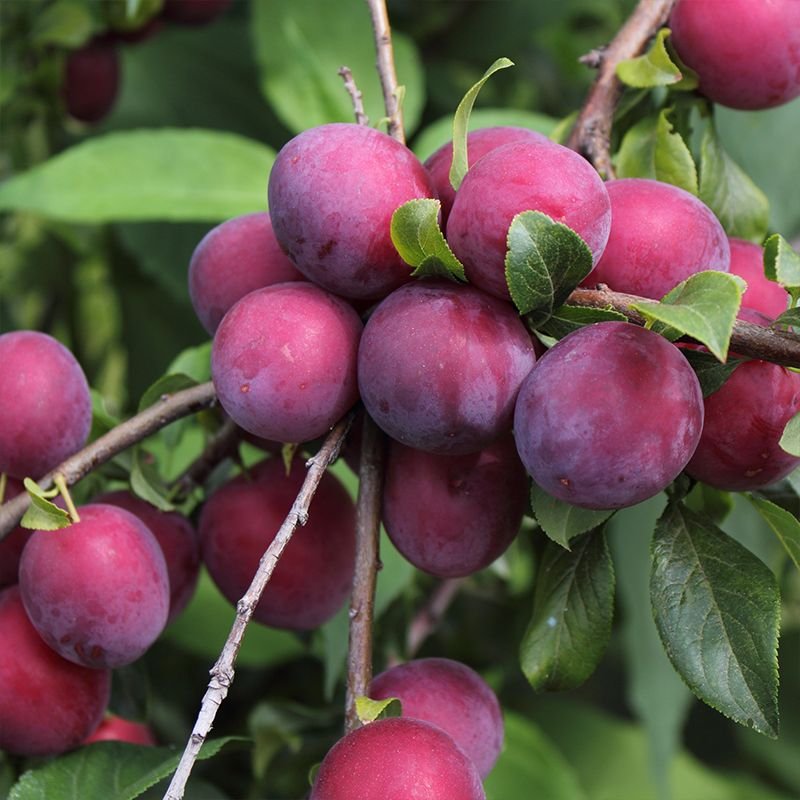
Planting a Satsuma Plum correctly ensures strong root establishment and early fruiting. Here’s a step-by-step guide:
- Prepare the Planting Hole
- Dig a hole about twice the width and the same depth as the root ball.
- Loosen the surrounding soil to encourage roots to spread easily.
- Amend the Soil
- Mix in compost or well-rotted manure with the native soil to enrich nutrients.
- Avoid using strong fertilizers at planting, as they can burn new roots.
- Position the Tree
- Place the tree in the hole so that the graft union (the swollen area above the roots) sits 2–3 inches above ground level.
- Spread out the roots gently before backfilling with soil.
- Backfill and Water
- Refill the hole halfway, water deeply, then continue filling.
- Firm the soil around the base gently to remove air pockets.
- Water again to settle the soil.
- Mulching
- Apply a 3-inch layer of wood chips, straw, or compost around the base to retain moisture and suppress weeds.
- Keep mulch a few inches away from the trunk to prevent rot.
Watering and Fertilizing
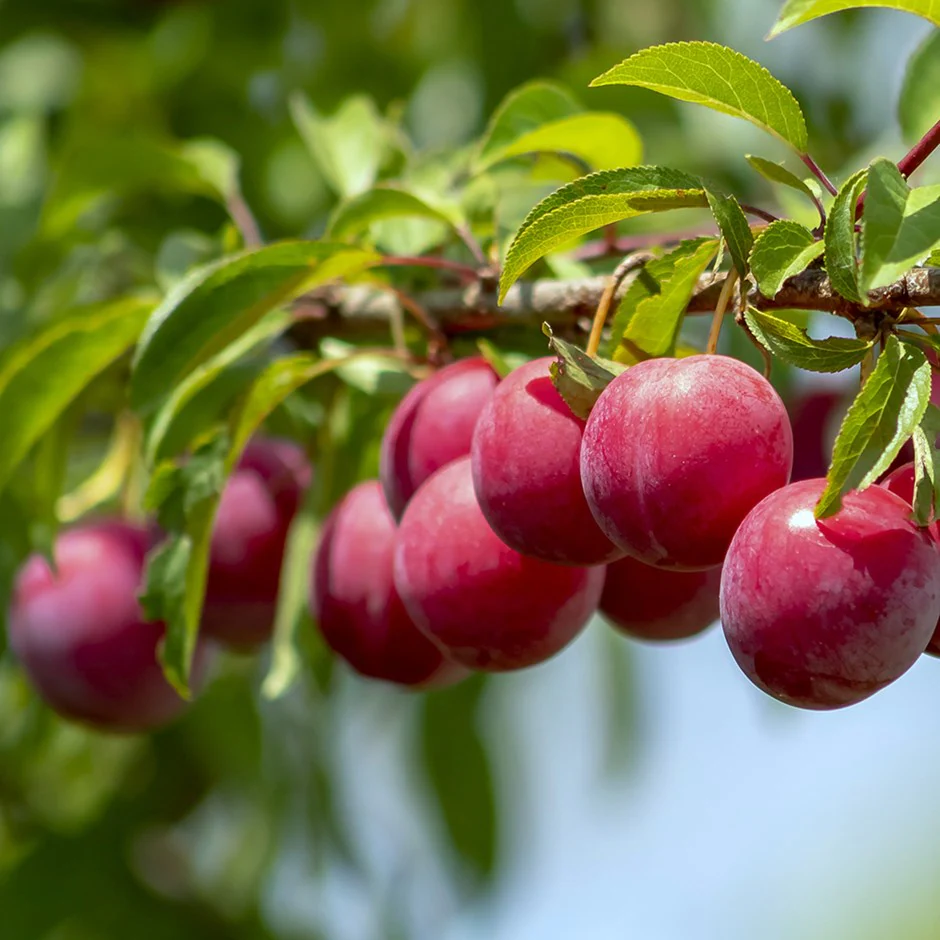
Watering:
Satsuma plum trees require consistent watering, especially during their first few years and the fruiting season.
- Water deeply once a week during dry periods.
- Avoid frequent shallow watering, which encourages weak root growth.
Fertilizing:
Feed your tree each spring with a balanced fertilizer (10-10-10) or organic compost. As the tree matures, adjust according to its growth and fruit production. Avoid over-fertilizing, as too much nitrogen can cause excessive leaf growth at the expense of fruit.
Pruning and Training
Proper pruning helps shape your Satsuma Plum tree, improve air circulation, and increase fruit production.
- Initial Pruning (After Planting)
- Cut back the main stem to about 2–3 feet tall to encourage lateral branching.
- Annual Pruning (Late Winter or Early Spring)
- Remove dead, damaged, or crossing branches.
- Maintain an open-center shape (vase form) to allow sunlight to reach all parts of the canopy.
- Thin out crowded branches to improve airflow and reduce disease risk.
- Summer Pruning (Optional)
- Lightly trim back vigorous shoots to direct energy into fruit ripening.
Pollination and Fruit Production
Satsuma plums are not self-pollinating, meaning they require another Japanese plum variety nearby to produce fruit. Compatible pollinators include:
- Santa Rosa Plum
- Shiro Plum
- Burbank Plum
Planting two trees within 50 feet of each other helps ensure good cross-pollination and heavy yields.
Once the tree matures (around 3–4 years old), it can produce 30–50 pounds of fruit per year, depending on growing conditions.
Common Problems and Solutions
Like all fruit trees, Satsuma plums may face pest and disease challenges. Here are the most common issues and how to manage them:
1. Aphids – These tiny insects suck sap from leaves, causing curling and distortion.
- Spray with neem oil or insecticidal soap.
- Encourage natural predators like ladybugs.
2. Brown Rot – A fungal disease that causes fruit rot and blossom blight.
- Prune out infected branches.
- Apply fungicide sprays during bloom.
- Keep the area around the tree clean and well-ventilated.
3. Plum Curculio (Fruit Beetle) – Causes small crescent-shaped scars on developing fruit.
- Pick up and dispose of fallen fruit promptly.
- Apply organic controls like kaolin clay or spinosad if infestations are heavy.
4. Root Rot – Caused by poor drainage or overwatering.
- Ensure proper soil drainage and avoid waterlogging.
Harvesting and Storing Satsuma Plums
Satsuma plums usually ripen in mid to late summer. You’ll know they’re ready to pick when:
- The fruit’s skin turns deep red or purple.
- They feel slightly soft to the touch.
- They detach easily from the branch with a gentle twist.
Harvesting Tips:
- Handle gently to avoid bruising.
- Pick fruits over several days, as they don’t ripen all at once.
Storage:
- Fresh plums can be stored in the refrigerator for up to two weeks.
- For long-term use, they can be frozen, dried, or made into preserves.
Benefits of Growing Satsuma Plum Trees
- High Yield: Produces abundant fruit with minimal care.
- Compact Growth: Ideal for small gardens or home orchards.
- Delicious Fruit: Perfect for eating fresh, cooking, or canning.
- Pollinator Friendly: The blossoms attract bees and beneficial insects.
- Ornamental Appeal: Beautiful spring flowers and glossy summer foliage.
Final Thoughts
Growing a Satsuma Plum tree is a rewarding experience for any gardener. With its stunning blossoms, manageable size, and sweet, juicy fruits, it’s a standout in any orchard or backyard. Whether you’re growing for personal enjoyment or market harvest, this variety offers both beauty and productivity.
By following proper planting, watering, pruning, and care practices, you’ll soon enjoy baskets full of delicious Satsuma plums — straight from your own tree.
So, grab your gardening tools, plant your Satsuma Plum today, and look forward to a summer full of flavor and color!
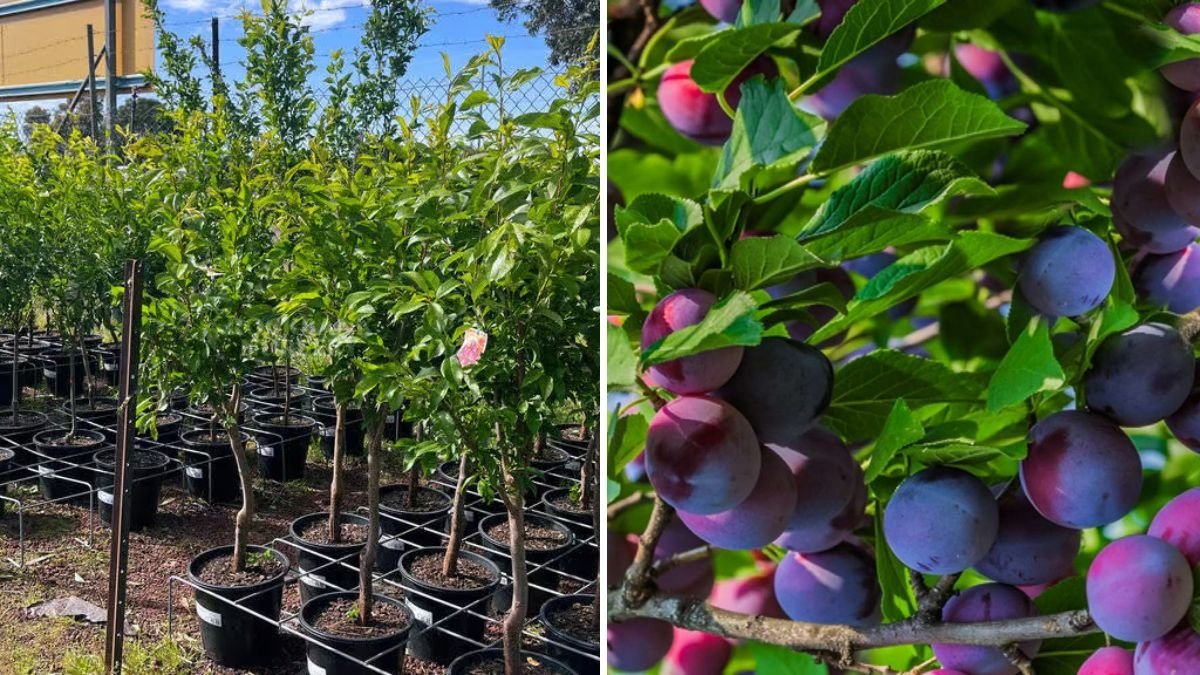
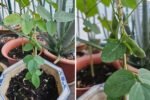
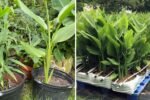
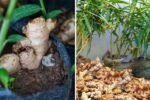

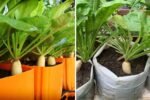
Leave A Comment